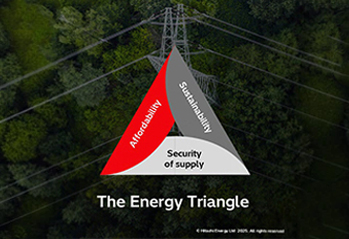Maria Armianova leads marketing and demand generation strategies for a $16 billion business, guiding a global team of over 80 marketers. With over 15 years of experience in B2B marketing, she specializes in building inclusive teams that drive brand visibility and deliver measurable business growth.
In an engaging interaction with Global Woman Leader Magazine, Maria shares her views on how marketing is driving sustainability perceptions, bridging corporate visions with ground realities, adopting innovative impact metrics, and shaping an inclusive, credible path for the energy sector’s net-zero future.

In the evolving energy landscape, how is marketing shaping perceptions of sustainability and net-zero goals? What innovative strategies are proving most effective in influencing stakeholders today?
Let’s be honest—at this point, sustainability isn’t something you need to “sell” anymore. Everyone’s on board with the idea. The real challenge now? Balancing it. We call it the Energy Trilemma—sustainability, affordability, and security of supply. You can’t just push one and ignore the others; it’s a tightrope walk.
Our job as marketers is to make that balancing act both visible and compelling. We’re telling the story of transition, not perfection. Personally, my favourite narratives to craft are those around “here’s something [big or small] we are doing today” versus selling some futuristic big picture.
As energy companies scale amidst global transitions, how can marketing bridge the gap between corporate vision and on-the-ground realities across BUs, regions, and markets?
This is where marketing proves its mettle. We should never just be a megaphone for corporate slogans—we’re translators of strategy into relevance. The magic happens when we deeply understand customer needs and local market realities, and then connect them to the broader vision. At Hitachi Energy, we obsess over mapping those journeys—what keeps our customers up at night, what makes them tick… Marketing’s superpower is empathy, paired with razor-sharp insight. That’s how you turn vision into value.
What unconventional yet powerful metrics can energy marketers use to measure the true impact of brand-to-demand initiatives?
Ah, the age-old dilemma: “Half my marketing budget is wasted, but I don’t know which half.” Fortunately, we’ve come a long way since that quip. Martech has given us the ability to connect the dots between a LinkedIn scroll and a signed contract.
At Hitachi Energy, we love a bit of forensic marketing—reverse-engineering won deals to analyze what really moved the needle. We look at engagement signals, content interactions, and contact-level data across the journey. It’s not about vanity metrics; it’s about what actually influences revenue. Because if your KPIs don’t help shape better decisions, they’re just… PowerPoint filler.
How can energy brands craft compelling, differentiated stories that cut through digital noise and drive real engagement?
If I had the magic formula, I’d bottle it and retire early! Truth is, we’re not just competing with other sustainability stories—we’re competing with cat videos, memes, and breaking news. We live in The Attention Economy and attention is the scarcest commodity. The trick? Be human. Be brief. Be bold. Don’t drone on about “carbon neutrality”—show me the wind turbine keeping a hospital running. Real stories, real people, real impact. And do it quickly—because you’ve got about eight seconds before your audience scrolls on.
What role does marketing play in ensuring the energy industry’s long-term credibility, and how can leaders today build an inclusive, adaptable marketing function for the net-zero future?
Credibility isn’t built in boardrooms—it’s earned in the field. Marketing has a crucial role in elevating the real stories: the transformer that brings clean energy to a village, the grid upgrade that stabilizes power in a heatwave. It’s not just corporate fluff—it’s people, places, and purpose.
And as for the marketing function of the future? It needs to look like the world we’re trying to power: diverse, agile, and always learning. I want my team to be just as comfortable talking AI as they are talking inclusion. Because you can’t build a sustainable future with a one-dimensional team.
How can energy marketers integrate AI, predictive analytics, and behavioral science to enhance customer-centric strategies and accelerate the energy transition?
Marketing’s always had a thing for tech—we were early adopters of AI, mostly for copywriting and campaign automation. But honestly, that’s still scratching the surface. The real gold lies in decision intelligence.
Imagine this: AI analyses customer behavior, market trends, and past campaign performance, then says, “Hey Maria, your next campaign should target X persona with Y message in Z channel.” Sounds futuristic? Gartner predicts that by 2026, 80% of advanced marketing teams will rely on agentic AI to shape campaigns.
That’s where I see the future—AI not just supporting marketers, but actually advising us. Now that’s sexy.
🍪 Do you like Cookies?
We use cookies to ensure you get the best experience on our website. Read more...
Copyright © All rights reserved. Global Woman Leader

.png)
